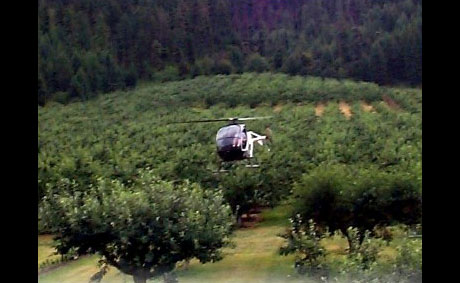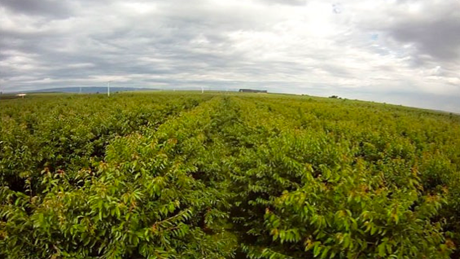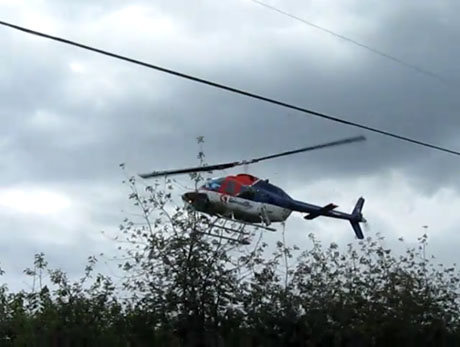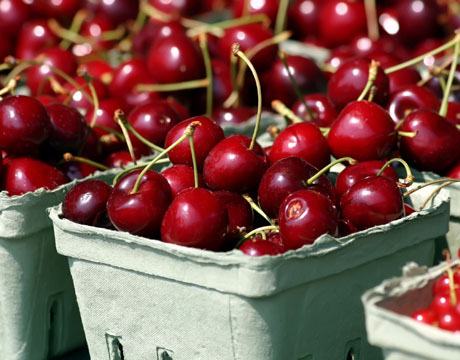At this time of year, Washington state’s cherry growers have their local helicopter pilot on speed dial.

IMAGE: A helicopter acts as a giant blow dryer above a Montana cherry orchard.
They are not taking triumphant joy rides over their ripening red crop, or conducting aerial surveillance of their picking force. Instead, they are paying $600 a day for the helicopter to blow dry their cherries.
While wind and birds pose problems, rain is a disaster: as the Seattle Times explains, “all it takes is a summer shower to swell the fruit, already fat with juice, until its skin splits.”
At that point, a harvest that might have been worth more than $10,000 per acre loses up to seventy percent of its value. Grower Denny Hayden, with 250 acres of cherries, grumbles to Times reporter Lynda Mapes that: “It would be a lot easier if I went every year to Vegas and threw my money on the table, instead of this water torture.”

IMAGE: A still from a pilot Maria Langer’s helicopter nose-cam (via An Eclectic Mind).
With the stakes that high, Hayden deals with three-tenths of an inch of rain over eight hours during the harvest by calling in his helicopter. The rain started at 3 a.m., Mapes writes, so he began by using “tractor sprayers to blow calcium on the trees to slow the uptake of water into the fruit by osmosis.”
Then, as soon as it was light, his contracted helicopter took off, flying extremely low (between 5 and 10 feet, depending on variety, tree density, and rainfall) and incredibly slowly (about 10 miles per hour) over the cherries, in order to blow dry them from above. Veteran cherry drying pilot Maria Langer (who is also a freelance writer and author of the blog An Eclectic Mind) explains that “the downwash from our rotor blades shakes the branches, thus shaking off accumulated water.”

IMAGE: Still from a YouTube video of helicopter blowdrying a cherry orchard.
The cherry drying business is seasonal — Langer travels up to Washington from Arizona, where her normal business lies in tours and aerial photography, each summer. It is also dangerous and boring, but utterly unique — cherries are the only fruit dried by helicopter, because of their vulnerability and value.
In fact, the next cherry you enjoy might have been dried four times or more, while pickers climb up and down 10-foot ladders, “visiting and revisiting the trees a minimum of three to five times to pick each cherry as it comes to maximum size and ripeness.” And that’s before they are hydro-cooled, sorted, and shipped to the consumer in twenty-four hours or less.

IMAGE: Cherries, via.
Understanding the effort that goes into this harvest makes a punnet of fresh, ripe cherries — already semi-miraculous — truly seem more precious than a ruby.
Note: The Seattle Times story found via @helenabottemiller.

